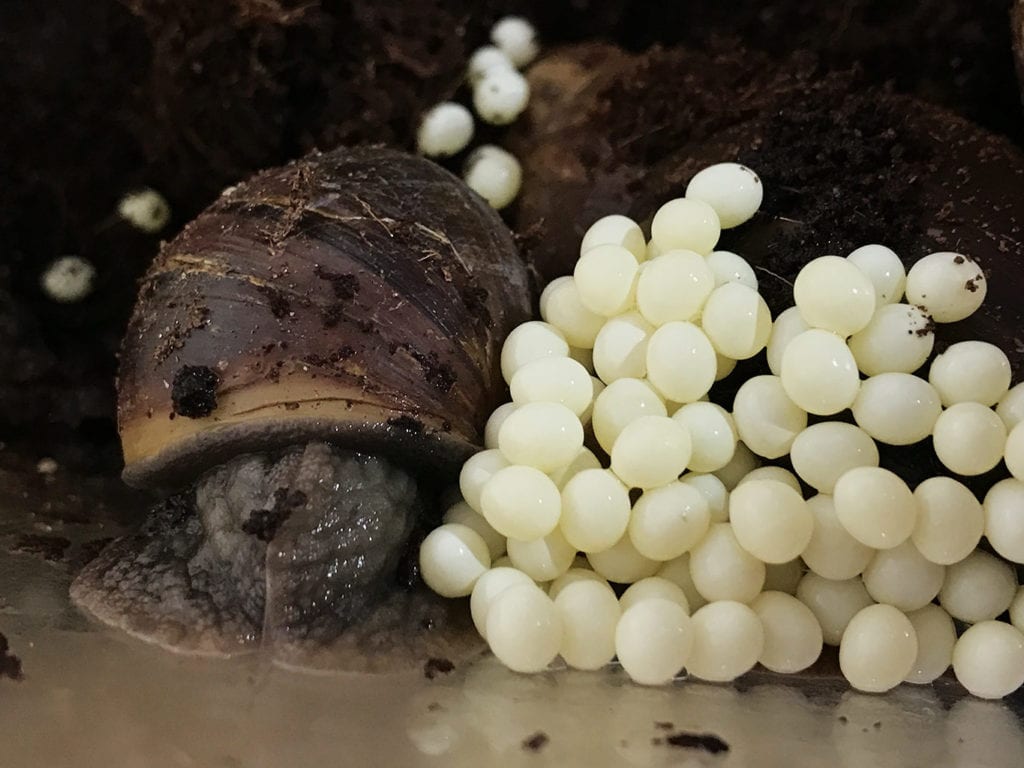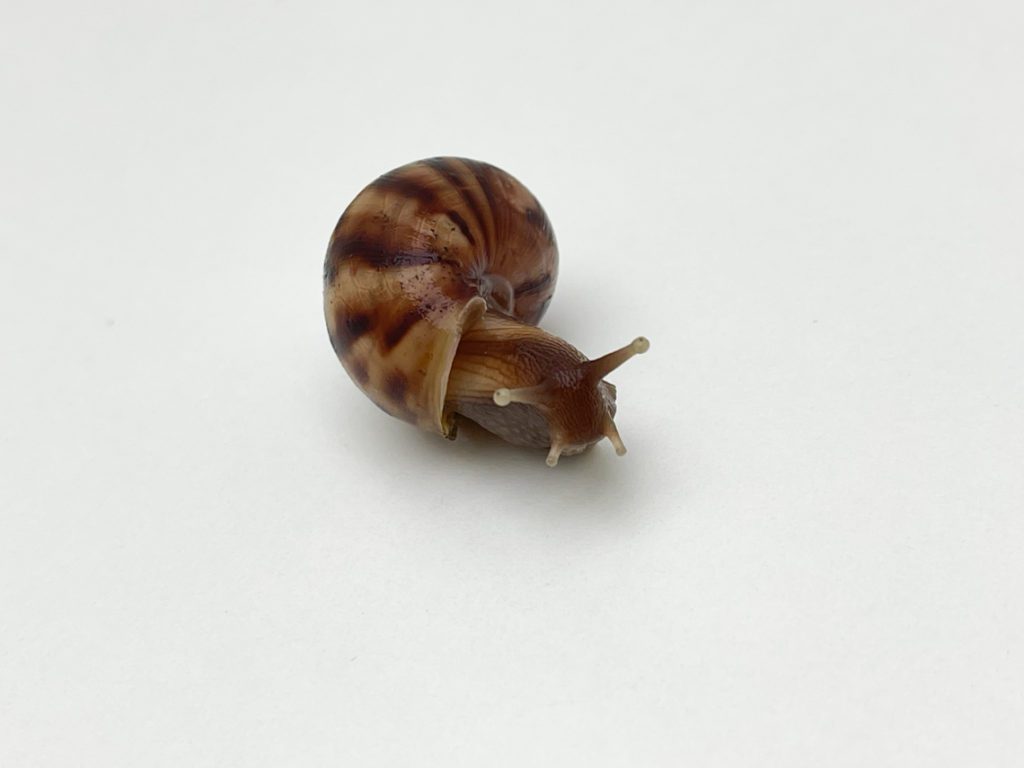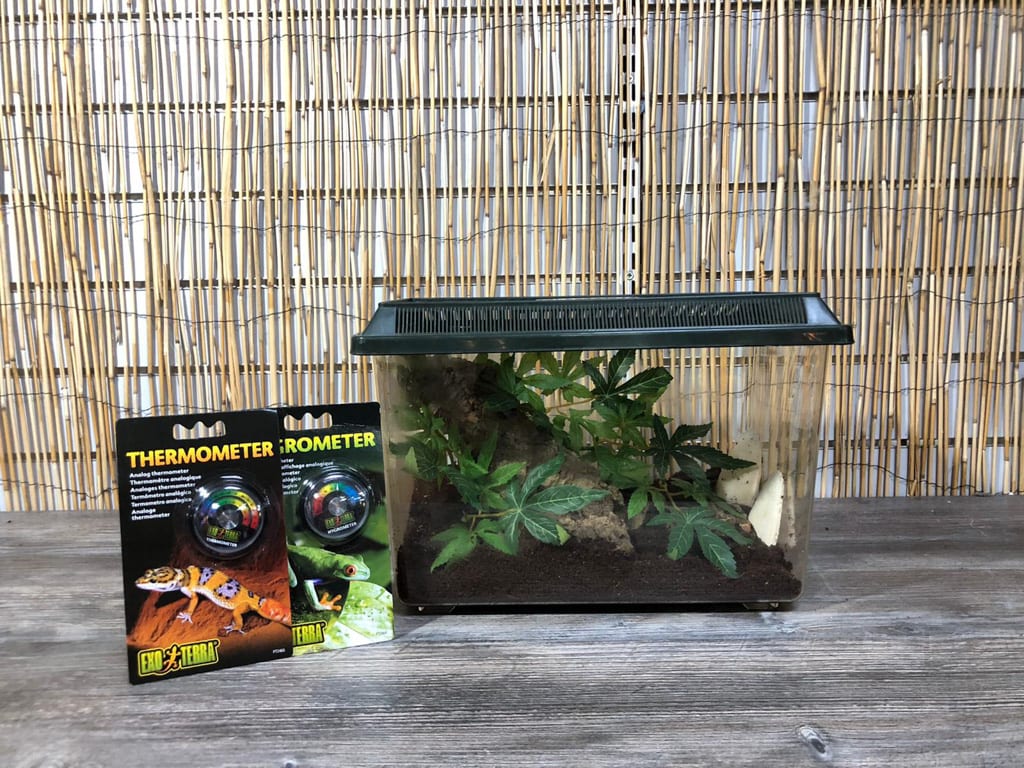
Giant African Land Snail
Care Sheet

The Giant African Land Snail is the largest snail in the world with recorded sizes of over 15 inches! Land snails are part of a group of invertebrates called molluscs, also containing sea creatures.
Snails have sensitive skin and so dechlorinated water should be offered. Use a water dechlorinator added to tap water or leave tap water uncovered for 24-48 hours before using. Exposure to the air gets rid of the chlorine.
Land snails are both male and female meaning that any 2 giant African land snails are able to breed. They lay around 200 eggs per clutch and can lay up to 5 clutches per year.
Snails enjoy veg, salad and cuttlefish as a part of their regular diet. The cuttlefish provides a good source of calcium which helps to keep the shell strong and healthy. Snails can die if their shell breaks so it is important to provide cuttlefish to aid in strengthening it.


HANDLING YOUR SNAIL
Always wash your hands before handling your snail to prevent passing any harmful chemicals which could be on your hands.
You may wish to wear latex gloves to handle your snail, they can get quite slimy! Snails are known for being quite slow moving animals, but they do get some speed up when moving around.
Always pick up and place your snail down gently and avoid dropping it on hard surfaces or on top of décor which could break the shell.


SEXING YOUR SNAIL
Giant African Land Snails are both male and female.
If paired, they will make their own decision on who lays the eggs.
Land snails can lay eggs on their own without the need for another snail.
To rid of unwanted babies, it is better to freeze the eggs immediately on finding as this is the most humane way to dispose of them. Do not throw in the bin as they will continue to grow and hatch. They should never be released into the wild.


HEALTH CHECK
One of the main issues that land snails can face are lack of calcium causing shell cracking and lack of heat which can cause snails to become dormant. Dryness can also be an issue for snails, being too cold or too dry can send them into hibernation.
To prevent this, ensure that your snails are reaching the correct temperature. You will notice that your snail does not eat or come our of hiding and when picking it up it may be hidden deep within its shell. These are signs that there may be something wrong in the enclosure.
Ensure your snails always have cuttlefish or dried crushed egg shell which gives them the calcium that they need to stay strong and healthy.
Provide fresh foods for your snails and remove old food daily to prevent mould build up. Snails will not eat off foods.
The snails substrate should be moist but not wet. It should be fluffy but not sopping with water. Being too wet or too dry can be an issue for snails.
You may notice small fruit flies appearing in your enclosure, this is due to the heat and damp. They are fine and will not hurt the snails, but they shouldn’t get to the point where there is too many. Regular cleaning keeps on top of them.








ADVICE FOR LIFE!
When you buy your Pet & Housing from us!
Priority Boarding | Advice available face to face, via Telephone, Facebook Chat, Email, Instagram



